Ever wonder what kind of bread you should be buying? Today’s post serves as a quick reference guide for what type of bread to buy!
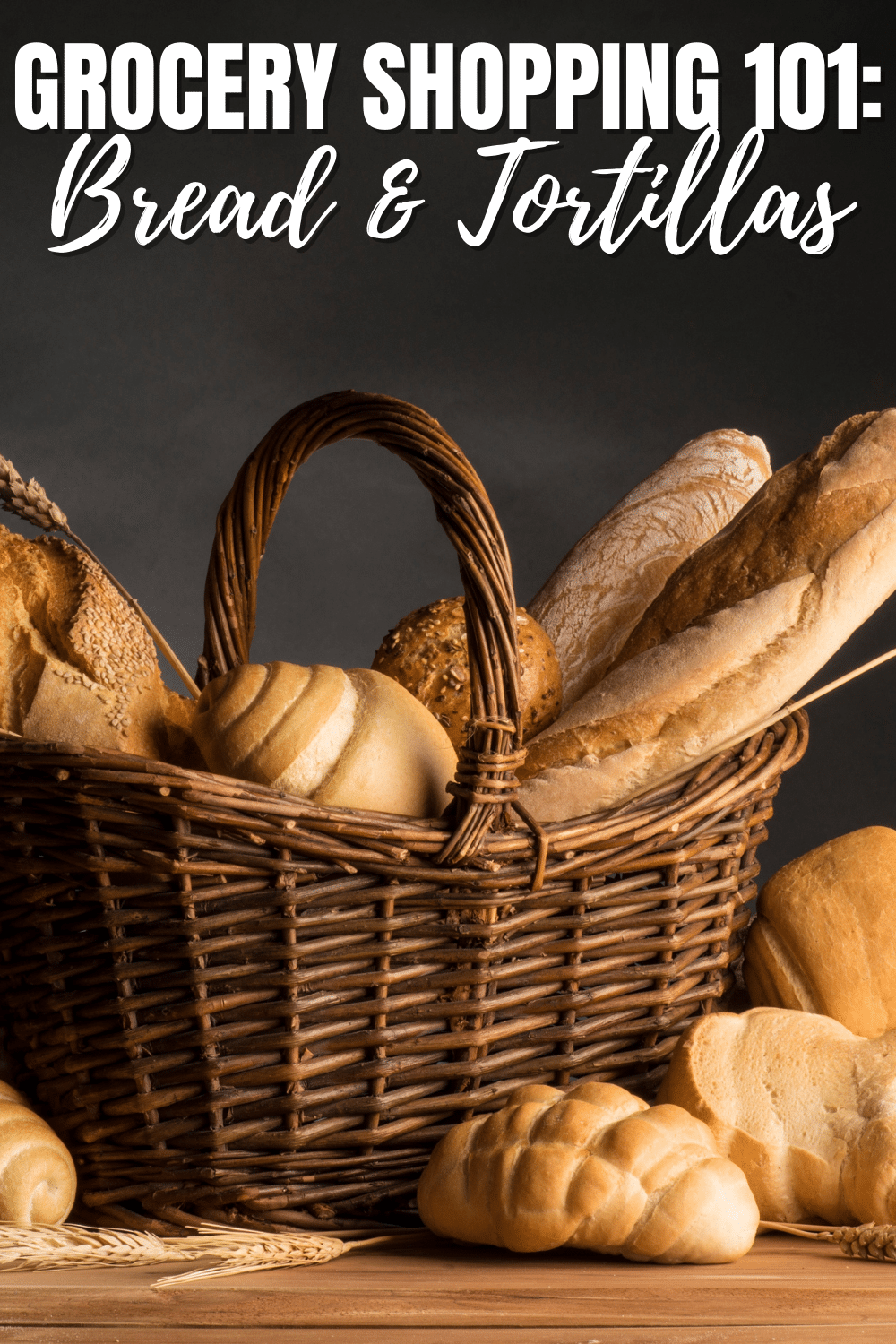
There are a lot of subtleties when it comes to the bread aisle. For example, how each type of bread is labeled can mean different things in terms of health. The below information applies to any bread product, including sliced bread, artisan bread, buns, and rolls.
Organic
This means the grain (wheat or otherwise) was grown without synthetic (but could still use natural-based) pesticides. Not all whole grains are organic, and not all refined white flour is not organic. Any type of flour could be organic if grown using organic growing methods.
Do I purchase organic? After reading Brain Health from Birth, I started buying organic oats and wheat products more regularly. The claim made in the book was that oats and wheat are often harvested before they are ready in the US and then dried using synthetic methods, one of which could be spraying glyphosate (an herbicide) on the harvested plants.
So, because I have small children, I fork over the money for organic more often than not. The one that gets me is the oats because they are so much more expensive. But, considering the amount I cook with oat flour (it’s a lot), I feel that it’s worth it. But, of course, if you’re only eating oats once a week, it may not be worth it.
Sprouted Grains
Usually, whole-grain seeds have begun to sprout. Catching the sprouts during germinating means your final product will have some of the starch already broken down. In addition, specific components such as phytates will be broken down, making it easier for the body to absorb certain vitamins and minerals. So nonsprouted grains and sprouted grains have similar nutrient levels, but sprouted grains may provide more bioavailability of the nutrients. This may help be who are sensitive to digesting grains. I don’t typically go out of my way to get sprouted grain products for my house, but there is a brand of tortillas I like I occasionally buy that is sprouted grains.
100% Whole Grain
In general, we buy and look for 100% whole grain bread. What is a whole grain? A whole grain is a grain where the outside layer, also known as the bran, is left intact during processing into flour. This means that flour will contain more protein, fiber, and nutrients. Refined flour removes the bran before milling the leftover starch into flour, leaving it devoid of those vital nutrients. We try to look for and purchase 100% whole grain bread products as often as possible. But, it’s not always easy to spot 100% whole grain products as many other labels on bread can make you think you’re getting 100% whole grain bread, but, in reality, it’s not.
Keep reading so that you don’t get hoodwinked!
100% Whole Wheat
The only difference between a product labeled 100% whole grain and 100% whole wheat is that the 100% whole wheat product will only contain whole wheat flour. The 100% whole grain product may have other whole grain flours, such as oats, rye, or barley.
Multi-Grain
I wrote about this a long time ago in my top 10 list of misleading food labels. Unfortunately, even I’ve been tripped up by this before on labels. When something is labeled multigrain, it has multiple types of grains in it, for instance, wheat and millet, oats, or rye (see label above.) It does not mean that the grains it contains are whole grains. To find out if the product contains whole grains, you have to read every ingredient on the ingredient list.
Note – rolled oats or oats are always considered a whole grain, even if it doesn’t say whole grain oats. There is always an exception to every rule, right?
Wheat
Many people assume that “wheat” bread is healthy. Wheat bread is often made out of refined wheat flour. Something labeled wheat means it’s made out of wheat. It could be refined wheat flour or 100% whole grain.
Whole Wheat
Do you think you’re buying the right thing when you get a loaf of whole wheat bread? Think again. Whole wheat might mean it contains whole wheat, but if it doesn’t specifically say 100% whole wheat, it probably includes a mix of whole wheat flour and white refined flour. This one has gotten me tripped up before, specifically with English muffins from Whole Foods.
White/Regular
This is your standard white bread, typically made from refined white flour. Even if it’s organic, we don’t usually buy this type of bread in my house. The exception we make is sourdough. I do buy sourdough bread about once a month. Trader Joe’s has a sourdough that has some whole wheat flour, so sometimes we try to buy that when we can. In general, my advice is to reduce your consumption of anything made with refined white flour to a very minimum.
The other exception I can think of is artisan bread, such as French bread and rolls. I do occasionally buy these for special occasions, a soup that needs a crunchy piece of buttered baguette, or if I need it for a photo shoot. But, again, minimal compared to our everyday grain consumption.
Seeds and Grains
Many high-end pieces of bread have added seeds. Many types of seeds are nutrient-dense additions to your bread! Just read the label to find out if the product contains whole grains or not.
Specialty Bread
All the same above usually apply to specialty bread such as gluten-free, keto-friendly, or whatever is popular.
For instance, gluten-free bread can be multigrain, meaning it’s made up of a combo of gluten-free flours like millet and Kamut, but that doesn’t mean it’s whole grain.
Grain-free products are a bit special because they are precisely what they state, grain-free. They are typically made of grain-free alternative flours such as almond flour and coconut flour with many binds such as eggs, flax, and psyllium husk. These are all nutrient-dense ingredients. However, many grain-free flours are cassava flour-dominated. I treat cassava flour or tapioca starch/potato starch the same as refined flour because it is similar in nutrient composition. For someone who can’t tolerate wheat, it’s great, but it still lacks the fiber, protein, and nutrients compared to other flours.
Tortillas
So, basically all the same of above apply. In today’s diverse marketplace, you’ll find all the products above in tortilla form, but you’ll also find corn tortillas.
Are corn tortillas whole grain? Only if the ingredient list says whole cornflour or whole grain corn flour. If it says degerminated corn flour, that means it is not whole grain. If it says corn masa, it’s a middle ground. Corn masa is made by soaking whole grain corn flour. This results in the loss of some of the bran but not all of it. I often buy La Tortilla Factory corn tortillas made from stone-ground corn masa. But, we also eat normal corn tortillas on occasion too. We like the taste of corn tortillas better than flour, and like sourdough, it’s a minimal part of our grain consumption.
What I Like To Look For
I generally look for 100% whole-grain products with short ingredient lists. Now, some delicious and good-quality bread has super long ingredient lists. I’m looking at you, DKB. But, I’ve gotten to know and trust those brands, so I only had to read the Dave’s Killer Bread labels once to know about them.
When asked about other bread brands for clients, I look to see if it’s whole grain and if it has a bunch of preservatives. Some companies that produce truly 100% whole grain bread like to load them up with preservatives because they aren’t as shelf-stable as white bread. Considering the significant number of bread options that are 100% whole grain that isn’t loaded with preservatives and additives, I chose one without. I also try to avoid any inflammatory oils, as well. However, there can be a significant price difference, so you’ll have to consider that!
I usually pick up my DKB at Costco (see my Costco grocery list), which helps keep the cost of their delicious and excellent quality bread down as low as possible.
I hope this post was helpful!
Read more Grocery Shopping 101 Posts:

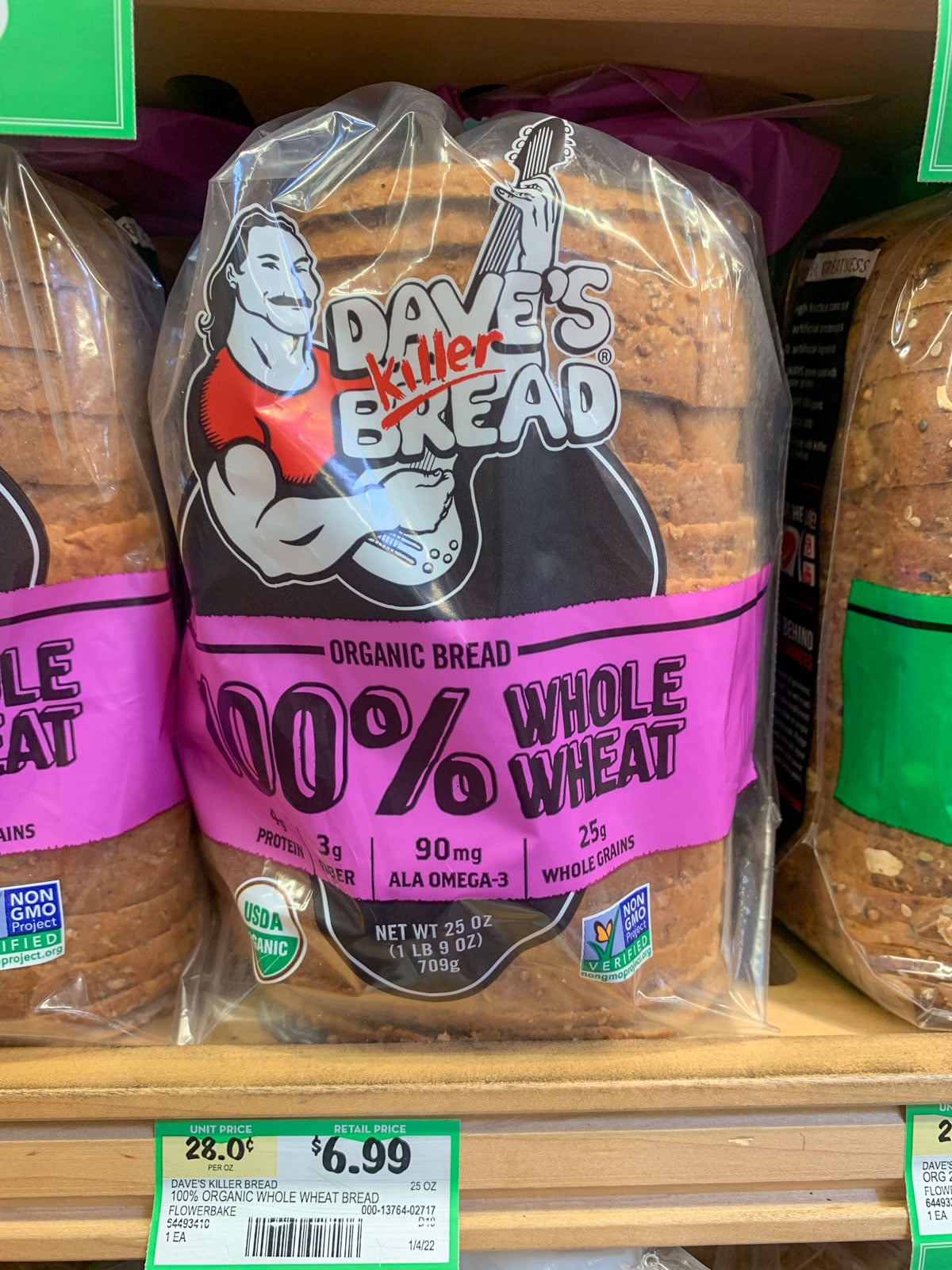
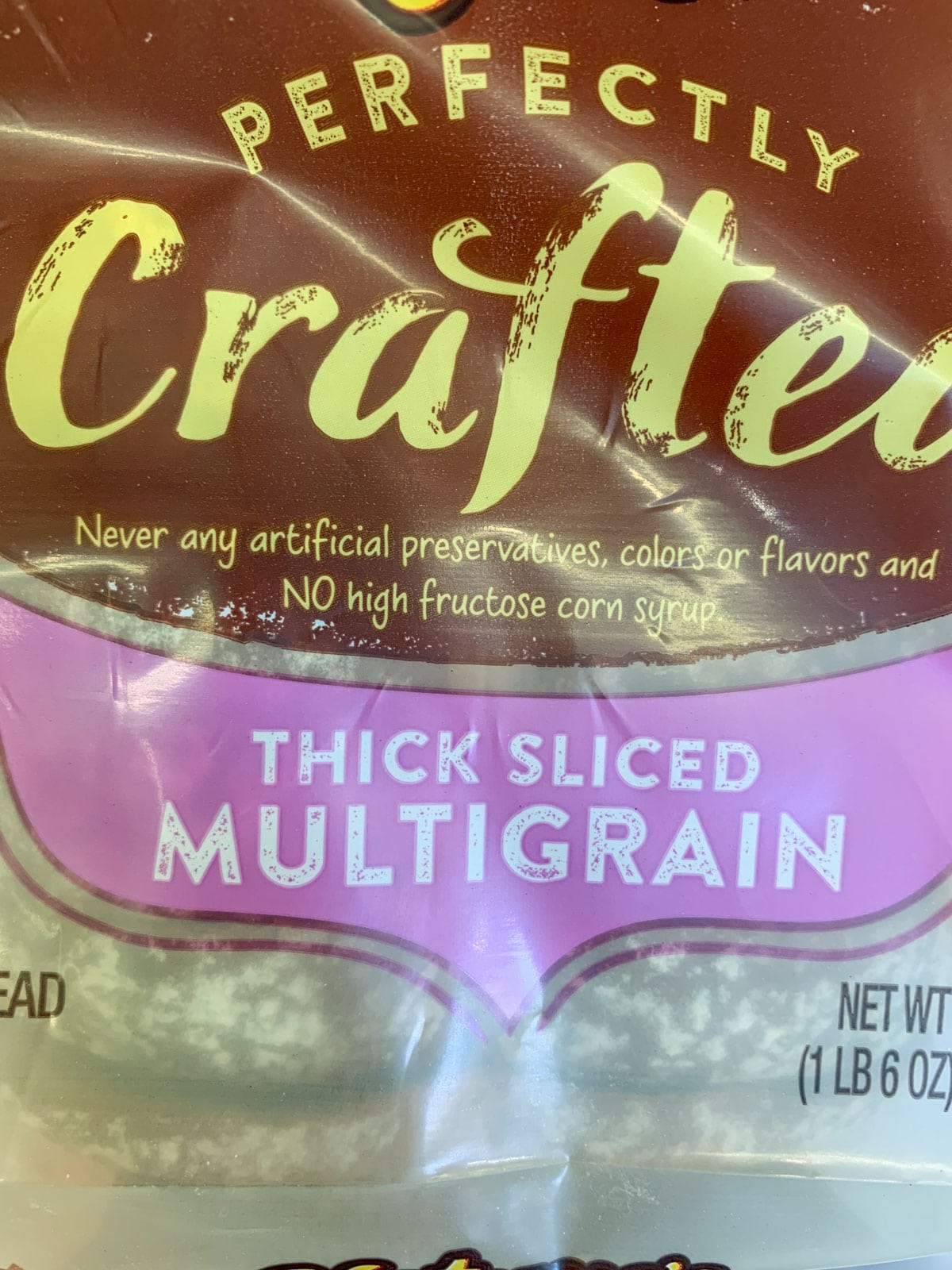
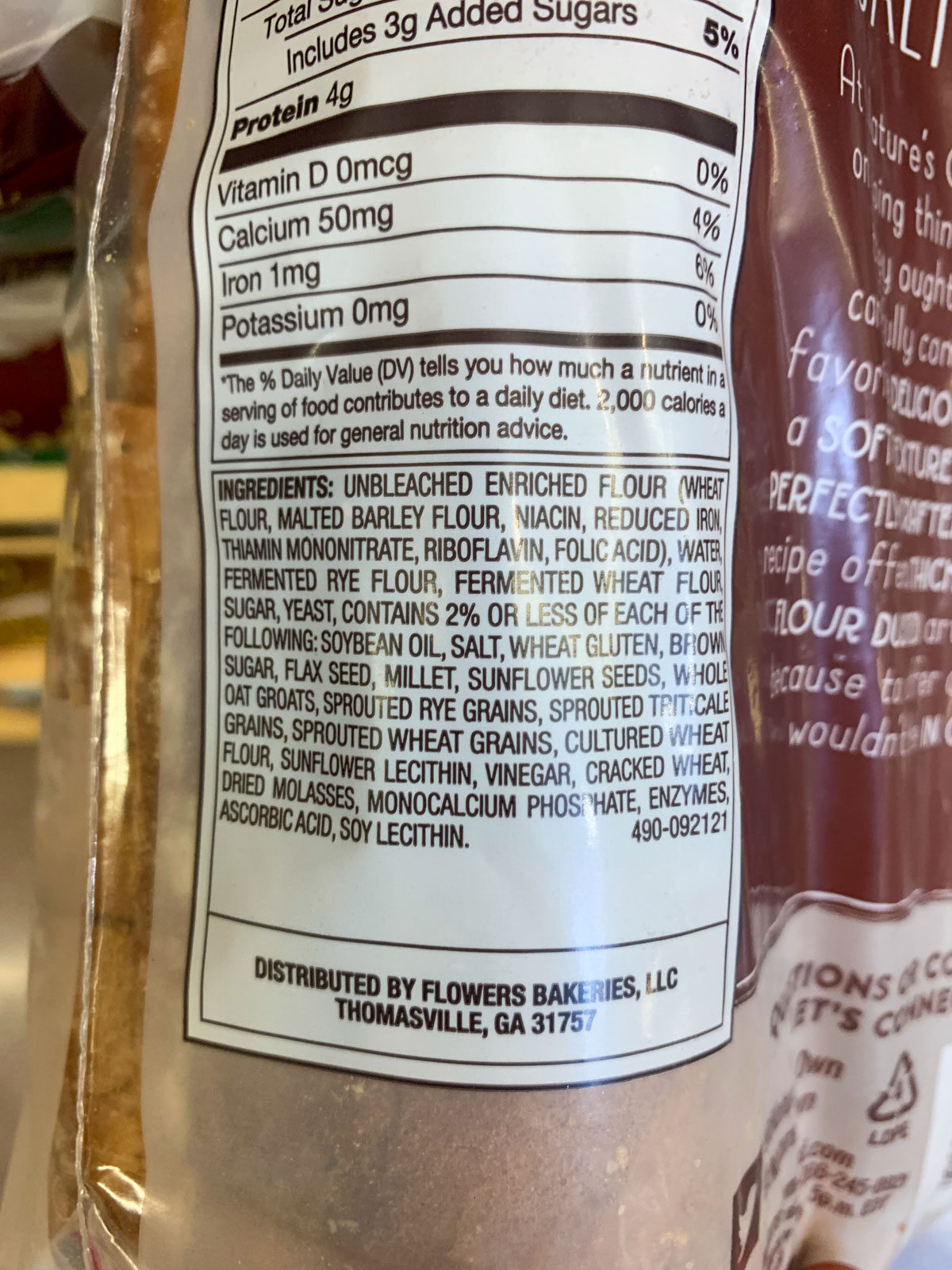
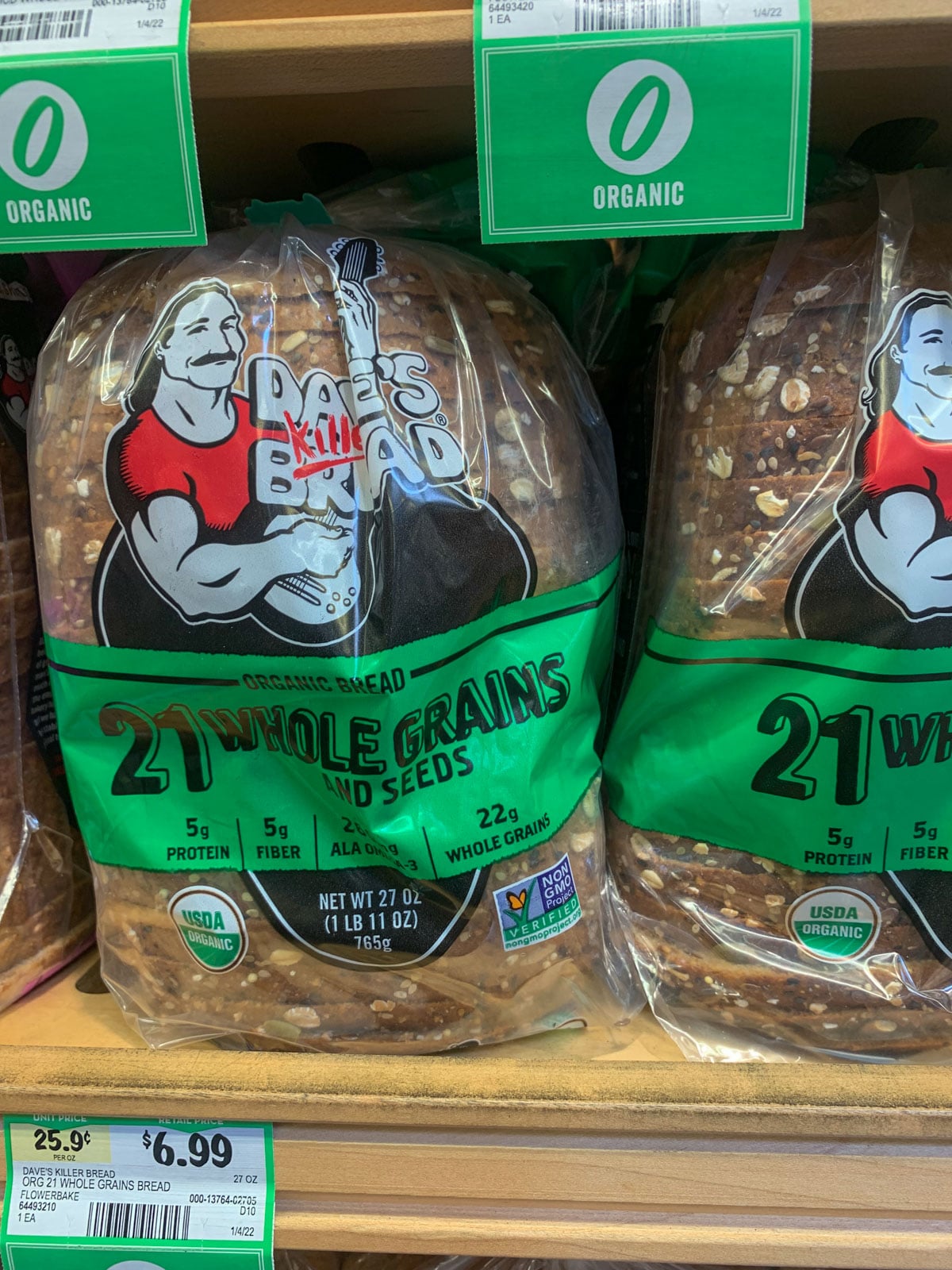


[…] Grocery Shopping 101: Bread Aisle […]